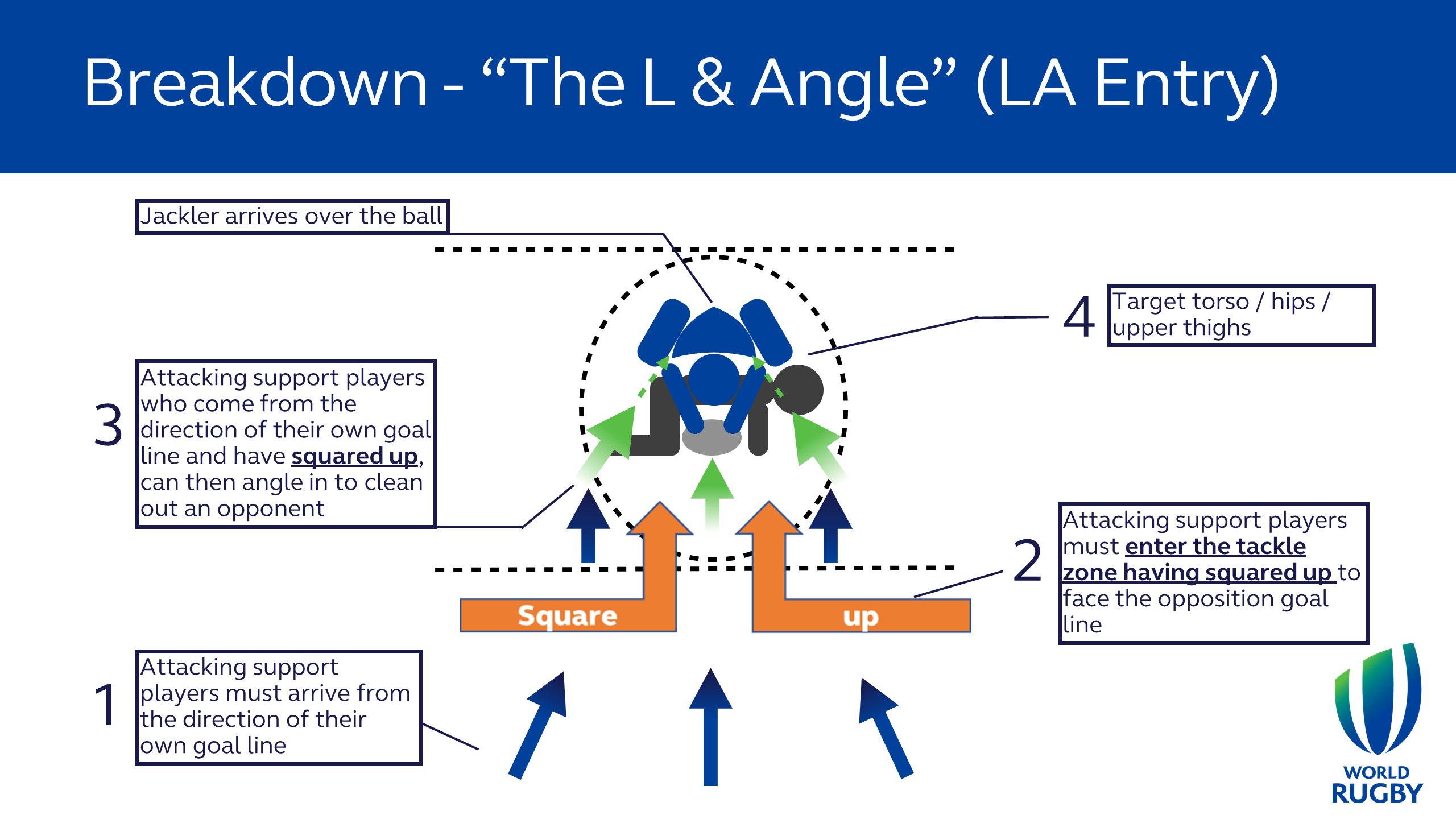Side entry - July 2022
In March 2020, a Law Application was published covering the whole of the breakdown.
At its heart, the principle was established “That the breakdown is coached according to the spirit of the laws, is played in a positive and accurate manner and is refereed consistently.”
On the whole, the coaching, playing and refereeing application has seen a cleaner, safer breakdown, especially aligned with the 2021 global law trials around protecting the lower limbs of the jackler, permitting the 1-man latch but outlawing the flying wedge of 2+ players pre-latched which have now been moved into full law.
However, feedback from players and coaches suggests one element needs renewed focus - side entry by both attacking and defending players.
There still remains injuries to the lower limbs due to the angles and speed of arriving players and there has also been a range of subtle, yet potentially dangerous injury when it comes to players being tipped within the breakdown.
We are therefore asking officials across the game to have a stricter focus and application of current guidelines and law with regards to direction and angle of arriving players at the breakdown, ruck and maul.
The key message is that players “square up” to enter the breakdown/ruck.
Existing law:
Tackle Law 14.6 - Tacklers may play the ball from the direction of their own goal line provided they have complied with [their tackle] responsibilities and a ruck has not formed.
Tackle law 14.8c - Other players must arrive at the tackle from the direction of their own goal line before playing the ball.
Ruck law 15 Principle - The purpose of a ruck is to allow players to compete for the ball which is on the ground.
Ruck law 15.5 - An arriving player must be on their feet and join from behind their offside line.
Ruck law 15.6 - A player may join alongside but not in front of the hindmost player.
Ruck law 15.16b - Players must not intentionally collapse a ruck or jump on top of it.
We remind all officials of these laws and the detail shared within the 2020 guidelines
Side entry - Guidelines
Side entry will be refereed. ‘LA entry’ expectation with players required to ‘drive not dive.’
L + Angle (LA) Entry relates to the arrival angle into the breakdown (an L shape as in the diagram below in orange) and the player can then angle in (green arrows).
The “L entry” – where the player ‘squares up’, must come first.

Side entry and inversion - poor practice
Side entry - good practice
Arriving player priorities
Square up
The attacking support player must enter the tackle zone relatively square facing toward the opposition goal line.
Direction of goal line
An attacking support player must arrive from the direction of their own goal line.
Angle in
An attacking support player who does the above, can then angle in to clean out an opponent.
Drive not dive
Arriving players must ‘Drive not dive’ to clear out an opponent. Shorten steps and bind, not dive off feet.
Cannot seal off
Attacking support players cannot come off their feet to seal off the contest.
Key elements
Backside to touchline
Backside should not be facing touchline on entry (arrive from depth and within LA entry).
Tacklers landing on ball carrier
Arriving players can legally drive away tacklers who land on top of the ball carrier (but should not be with a tucked arm action). Referees will also look to be more stringent on slow movers.
No diving on tackler
Arriving play cannot dive upon the tackler. They also cannot tackle players who are not near the ball or take players too far beyond the breakdown.
Foul play: A reminder that these can also take place within a tackle/ruck and should be refereed accordingly
Arriving players must not commit any foul play offence or play that may be deemed to be dangerous.
This includes, but isn’t restricted to:
Lifting legs above horizontal
Arriving players of either side must not lift a player’s leg(s) above horizontal.
Shoulder charging
Arriving players must not charge into player’s contesting the ball or on the ground near the ball.
Neck grabs / rolls
Arriving players must not wrap and roll the neck of the jackler to remove them from the contest or bring them to ground.
Stamping
An arriving player cannot stamp on any other player.
Head contact
A participating player cannot bring another player to ground so their head contacts the ground first